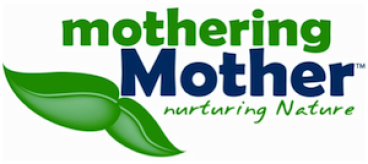
| Plastic Island | |
| Far From Paradise Plastic lasts essentially forever, so if it's not recycled it ends up in a landfill or in the ocean. Plastic bags are particularly susceptible to being swept up by the wind and deposited into the Pacific Ocean. Twelve years ago, Captain Charles Moore was returning from a sailing regatta in Hawaii. In hopes of avoiding windy conditions and turbulent seas, he led his crew to the North Pacific Gyre. What he found just happened to be the Moby Dick of marine pollution - hundreds of miles of floating garbage. This "trash soup" contains countless tons of plastic waste floating atop a region of the Pacific. Plastic bags, fishing nets and lines, cigarette butts, and Styrofoam are just some of the members of the Great Pacific Garbage Patch, as it's been dubbed. Approximately 80% of this rubbish has been transported from land into the ocean via sewage and river runoff. The remaining 20% comes from accidental and illegal dumping from ships. Plastic bags, a main ingredient in this soup, are easily picked up by the winds and carried to the oceans. Then, over time, the ocean currents circulate the bags and other articles of waste to this "island" of trash until it reaches the center of the gyre. Here, due to lack of wind and ocean motion, the soup sits and is continuing to grow in size. It has been estimated that there are currently 46,000 pieces of plastic per square mile in this trashy wilderness. At an individual level, you can do your part by limiting your consumption of plastic. Mothering Mother produce bags ensure that you, as an Earth-conscious consumer, don't further contribute to this daunting reality. The cotton bags will reduce, or better yet eliminate, your use of unnecessary plastic bags. Moreover, stick to products that don't use excessive amounts of packaging. For instance, instead of buying vegetables that come pre-portioned into individual servings, like baby carrots, buy large fresh carrots and cut them at home. Store the cut carrots in the refrigerator in a bowl of water. | |
| Green By the Book | |
| If you live in New York City, your books are going to get a whole lot greener. Recently, the newest branch of New York Public Library opened up near Battery Park. Eleven years in the making, the Battery Park Library hosts wood floors made from scraps of window frames, old tires used as carpet, and a staircase made of recycled glass and mirrors. The recycled building materials, high-tech computer technology and, of course books, make this library energy efficient and educational! Upon entering the library, a large touch screen computer tells visitors about how much energy and water is consumed in the building. Combining the talents of 1100 architects, Battery Park Library may only be open 3-4 days a week in order to adhere to the energy budget projected for this haven of books. Looks to be like the Big Apple is improving its green credentials by the books. | |
| Fun Ways to Celebrate Earth Day with Your Family | |
| Earth day is upon us once again (April 22nd). We don't need an excuse to celebrate the Earth, but there are some fun ways to teach your family about the importance of our planet. Crafts using recyclables are easy and enjoyable. Try cutting a square out of an empty milk carton and filling the carton with birdseed to attract birds to your yard. Or, start a vegetable garden in your backyard. It's a great way for your family to bond and the results are more sustainable than a trip to the grocery store. Simple crops include lettuce and cherry tomatoes. Teach your loved ones about composting by decorating a compost bin with nontoxic paint. Compost allows you to dispose of organic waste that will come in handy when it is time to fertilize your new vegetable garden. Make every day Earth Living Day! Namaste, Sydney | |

No comments:
Post a Comment